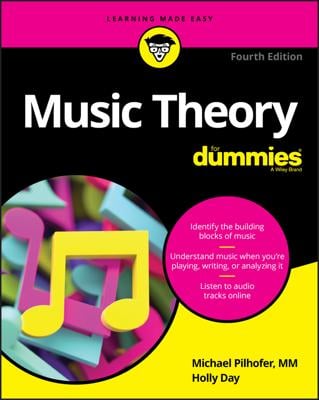Most often, the melody is the part of the song you can’t get out of your head and it is an important part of music theory. The melody is the lead line of a song — the part that the harmony is built around, and the part that gives as much glimpse into the emotion of a piece as the rhythm does.
Much of melody’s expressive power comes from the upward or downward flow of pitch. The pitch of a song goes up, and it can make the song sound like it’s getting either more tense or more lively; the pitch of a song goes down, and it can give that part of the song an increased melancholic or dark feel. The shape of the pitch’s travels is called its contour.
Here are the four common melodic contours:
Arch
Wave
Inverted arch
Pivotal
Contour simply means that the melody is shaped a certain way; the shape of a melody is especially easy to pick out when you have the sheet music right in front of you. The possibilities for building melodic phrases with just four basic contours are virtually infinite. (Building melodic phrases, means starting at the I chord, going up to the IV or V chord, and ending at the I chord.
Here’s a stretch of music that has an arch contour. Note how the melody line in the treble clef first goes up in pitch from a low point to a high point and how it then goes back down again, creating the arch. When music goes up in pitch gradually like this, it results in an increase in tension in that section of the composition. The lower the pitch gets in such a gradual arch, the more the level of tension decreases.

Now, check out some music with a wave contour. Note how the melody line goes up, and down, and up again, and down again — just like a series of waves.
Look at some music with an inverted arch contour. The only difference is that the melody line in below goes down in pitch and then up to the end of the phrase. Therefore, the phrase starts out sounding relaxed and calm but contains an increase in tension as the arch rises toward the end of the phrase.
Check out an example of music with a pivotal contour. A pivotal melody line essentially pivots around the central note of the piece — the E. A pivotal contour is a lot like a wave contour, except that the movement above and below the central note is minimal and continuously returns to that central note. Traditional folk music uses this melodic pattern a lot.
Any melody line in a piece of music generally falls into one of the preceding categories of contour. Try randomly picking up a piece of sheet music and tracing out the melody pattern yourself to see this in action.
The range of a melody is determined by the interval between the highest and lowest pitches of the song. The rise and fall of tension is often proportional to its range. Melodies with a narrow pitch range tend to have only a slight amount of musical tension in them, whereas melodies with a wide range of pitches are more likely to have a greater level of tension. As the range of pitches in a song is widened, the potential for greater levels of tension increases.

